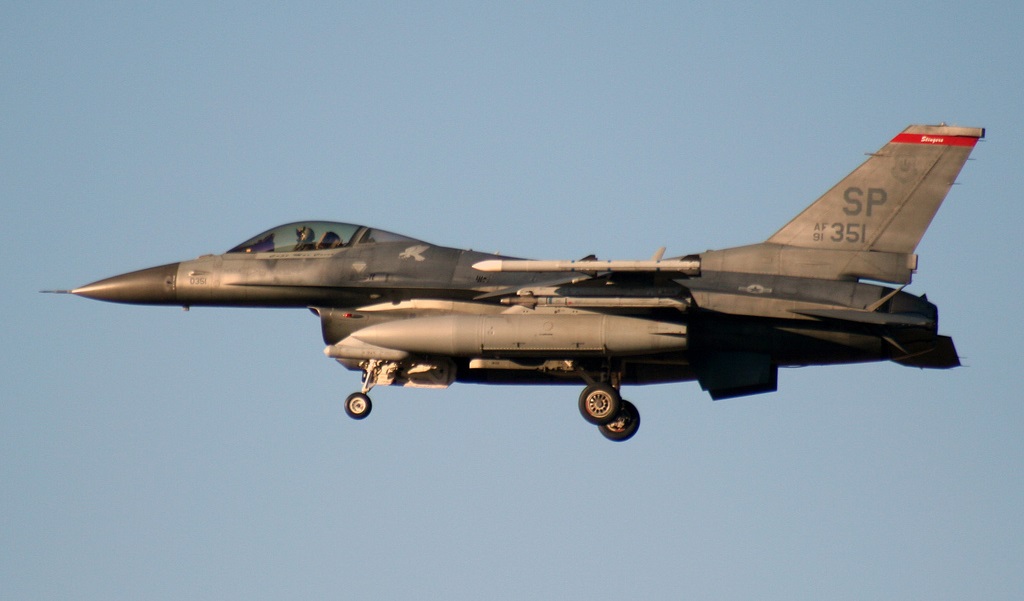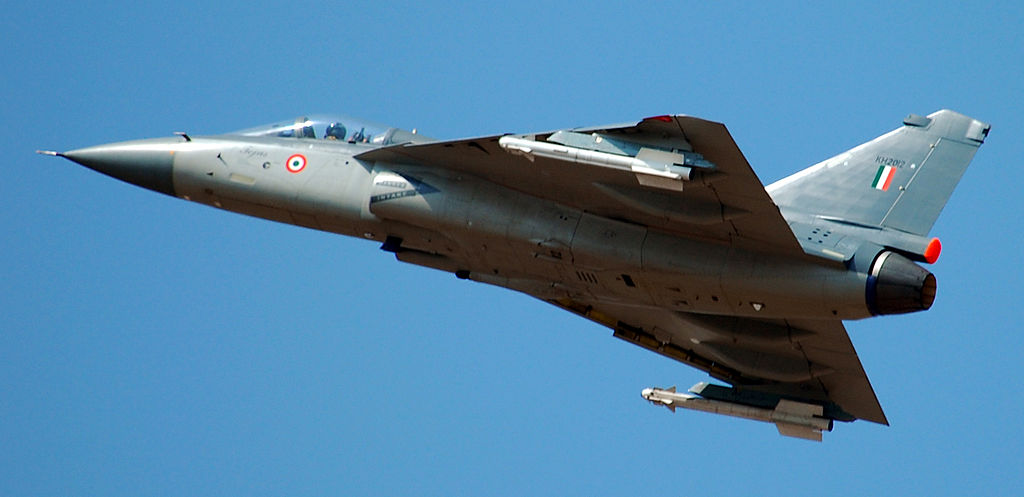
U.S. Air Force Secretary Deborah Lee James and Under Secretary of Defense Acquisition Frank Kendall’s recent visits to India were dominated by one discussion—Lockheed Martin’s offer to re-locate its F-16 production line to India, if India opts to purchase the F-16 to reduce its fighter aircraft shortage. In fact, India’s shortfall of medium multi-role combat aircraft (MMRCA) has attracted a great deal of attention from other global defense companies as well, such as Dassault and Saab Group. In her article titled “Why India Should Consider Lockheed Martin’s F-16 Offer,” scholar C. Christine Fair recommends that India ought to accept the F-16 as its dominant fighter platform because it would encourage India’s military-industry base to become “a serious exporter of fighter aircraft,” in addition to ameliorating the diminishing fighter strength of the Indian Air Force (IAF). She further argues that the F-16 would help India advance its aircraft industrial base and potentially even have strategic value by denying Pakistan platforms or spare parts for its existing F-16s, degrading Islamabad’s combat capabilities. She also contends that the F-16 would provide the IAF a platform with modern avionics and munitions at a lower price point than the Dassault Rafale or the Saab Gripen, which are other options India has considered.
Her assessment, however, does not address how the acquisition of the F-16 would fit into the IAF’s airpower requirements and need for fleet standardization by reducing the number of aircraft types. This is an important consideration because fleet standardization reduces maintenance and training costs. This debate is especially urgent as India has an existing deal in place with Dassault for 36 Rafale medium aircraft, outside of the current proposed deal with Lockheed. Opting to purchase both the Rafale and the F-16 would add complications to the IAF’s logistics, training, budget, and force synergy.
IAF Fleet Rationalization and Standardisation
By 2027, the IAF will have moved towards a fleet almost exclusively comprising twin engine fighters. And this trend will be even more noticeable from there on as the MiG-21 and the Mirage 2000 are expected to be retired by 2032. The MMRCA and the Sukhoi-30 MKI, a twin engine air superiority fighter, will dominate the IAF fleet. As I have argued elsewhere, this would mean that “contrary to international trends where countries have more light fighters and fewer high-end heavy fighters, the IAF arsenal will almost completely be dominated by twin engine heavies, with their attendant life cycle and operational costs.”
Since the IAF’s pursuit has been of a high-low mix or even a high-medium-low mix, this is a cause for concern. Whatever fighters India might opt to purchase would attempt to rectify imbalances in this mix. Both the F-16 and the Gripen currently on offer to India for co-production are both single engine and would fall under light (low) weight force component of the IAF. The ‘medium’ weight component of the IAF fleet for which the Rafale, F-16, and the Gripen are contending is envisaged to fill the gap between the ‘heavy/high’ weight Su-30 MKI and the indigenously-built Tejas light combat aircraft being built by Hindustan Aeronautics Limited, in terms of weapons payload, combat range, and technology.

The IAF is in desperate need of new fighters, especially given the poor serviceability which plagues the Su-30MKI and the disappointing delivery schedule of the indigenously-built Tejas. However, it requires a great deal of further examination whether the F-16 is the right fit for India. An immediate consideration is that if India completes the deal with Dassault for 36 Rafale aircraft, acquiring the F-16 would increase the cost in the form of maintenance, acquisition of spares, and the training of two different sets of pilots and maintenance crews, which would further burden the IAF’s already diverse combat aircraft fleet.
IAF’s Requirement for Generation 4.5 Fighters versus the F-16
The version of the F-16 offered to India is the Block 70. As the pinnacle of the F-16 line, the platform has a modern active electronically scanned array (AESA) radar (which helps detect and track targets over greater ranges), advanced weapons, and a proven platform. However, the Block 70 has some important weaknesses including “mediocre ‘high and fast’ performance, fewer missiles than its rivals, and a smaller detection range than some of its larger rivals.” Another important concern about the F-16 is its compatibility for future upgrades. Even though this may not be a problem with minor upgrades, it is difficult to imagine the F-16 having compatibility with fundamental improvements, especially with an airframe close to four decades old. This is troubling to consider because the IAF needs a platform that can last and has the potential to be upgraded for the next 40-50 years.
In comparison, capabilities of ‘4.5 Generation’ fighters, such as the Rafale and Gripen, include “low-observability to radar, the ability to super cruise (fly at supersonic speed without using afterburners), and extreme manoeuvrability at all speeds.” The ability of the 4.5 Generation fighters to super cruise at very high altitudes using powerful sensors and long range missiles is a capability the F-16 simply does not have. In contrast to the F-16, the open systems development in 4.5 Generation fighters, such as the Rafale, will allow the IAF to easily add, upgrade, and swap components or software.
However, even though the Rafale and other 4.5 Generation fighters are better able to penetrate defended airspace, compared to legacy platforms like the F-16 or other fourth generation aircraft currently in IAF service during a limited conflict, what goes against them is that they are too costly and don’t really have stealth technology. This weakens the case for 4.5 fighters, as opposed to the F-16 or Sukhoi-30 MKI, which would be cheaper to acquire and more mission-capable.
Thus, it is important to consider the core reasons the IAF needs these new aircraft, including traditional roles like air defense, close air support, and strike capabilities. Acquiring 4.5 Generation fighters at tremendous cost to the exchequer offers very little in the form of technology or combat capabilities in these roles for the IAF. With this in mind, it seems intuitive that India must consider a broader range of options better suited for its combat requirements and fleet standardization. One potential option is acquiring an additional mix of technologically up-to-date Su-30 MKI and accelerating the development of the indigenous Tejas with requisite enablers like air-air refuelers and Airborne Early Warning and Control Systems (AEW&C), although there are certainly other options as well.
Current plans of acquiring 36 Rafales and another similar performing aircraft like the F-16 or the Gripen would go against the standardization of the IAF fleet. Reducing the number of aircraft types by acquiring only one type, as opposed to two or more, will improve affordability by reducing acquisition, operating, integration, and training costs. This will result in a leaner, efficient aircraft fleet possessing the right operational capacity and war fighting capabilities for India’s needs.
***
Image 1: Lockheed Martin F-16 CJ, Carlos Menendez San Juan, Flickr
Image 2: India’s indigenously-built Tejas aircraft, Rahul Dev Nath, Wikimedia


